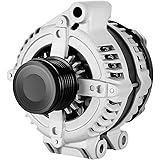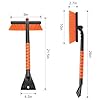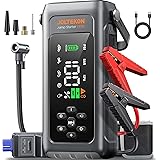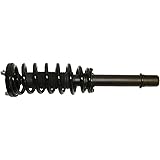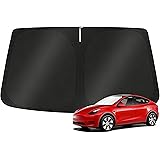Table of Contents
When most people ask, “can you lease a used car?” they are often surprised to learn that the answer is a definitive yes. While leasing is traditionally associated with brand-new vehicles, a growing and largely untapped market exists for leasing pre-owned cars, certified pre-owned (CPO) vehicles, and even off-lease models. This alternative path to car acquisition can offer the best of both worlds: the lower monthly payments of a lease combined with the reduced depreciation hit of a used vehicle.
However, navigating the world of used car leasing requires a keen understanding of its unique advantages, potential pitfalls, and the specific financial calculations that differ from both new car leasing and used car buying. This definitive guide will demystify the entire process, providing you with the expert knowledge needed to determine if leasing a used car is the right financial and practical decision for your driving needs.
Demystifying the Concept: What is Used Car Leasing?
A used car lease is a contractual agreement where you make monthly payments to a leasing company or lender for the right to drive a pre-owned vehicle for a fixed period, typically two to three years. Unlike a loan, where you are financing the entire purchase price with the goal of eventual ownership, a lease covers only the vehicle’s depreciation during the term you use it, plus fees and interest.
At the end of the lease, you simply return the vehicle, though you may have the option to purchase it for a predetermined “residual value.” This model is fundamentally different from the new car leasing process that dominates the market. While major manufacturers have well-established leasing arms for their new vehicles (like Toyota Financial Services or GM Financial), the used car leasing landscape is more fragmented. Options can include:
- Captive Lessors: Some manufacturer finance companies offer leasing on their own Certified Pre-Owned (CPO) vehicles.
- Third-Party Leasing Companies: Independent financial institutions that specialize in or offer used car leasing.
- Banks and Credit Unions: Some traditional lenders may offer used-car leasing products, though they are less common than loans.
Understanding this landscape is the first step in recognizing that while “can you lease a used car” is answered with a yes, finding the right provider requires more targeted research.
The Advantages of Leasing a Used Car
Choosing to lease a used car isn’t just a matter of necessity; it can be a strategically sound financial decision with several compelling benefits.
Significant Monthly Payment Savings
The most powerful advantage of leasing a used car is the dramatic reduction in monthly payments. This stems from two key factors. First, the vehicle has already absorbed the steepest part of its depreciation curve. New cars can lose 20-30% of their value in the first year and up to 50% within five years . By leasing a car that is two or three years old, you are no longer financing that initial massive value drop. Second, you are only financing the depreciation that will occur during the lease term, not the entire vehicle’s value. This combination often results in monthly payments that are 30-40% lower than leasing a comparable new model and significantly lower than loan payments on a used vehicle purchase.
Access to Higher-End Models for Less
Leasing a used car can open the door to luxury brands and premium features that might otherwise be outside your budget. The monthly payment on a leased, two-year-old luxury sedan could be comparable to the payment for a loan on a new, mainstream economy car. This allows you to experience a higher level of comfort, performance, and technology without the associated new-car price tag or the worry of long-term maintenance costs on an aging luxury vehicle.
Reduced Worry About Major Repairs
If you lease a Certified Pre-Owned (CPO) vehicle, you gain a significant advantage. Most manufacturer CPO programs extend the original factory warranty and often include a comprehensive limited warranty that can last through your entire lease term . This means that, similar to a new car lease, major systems like the engine, transmission, and drivetrain are protected. You can drive with peace of mind, knowing that an unexpected four-figure repair bill for a turbocharger or catalytic converter is likely covered, shielding you from the volatility of out-of-warranty repair costs .
A Shorter Commitment to a Vehicle
Leasing any car, new or used, inherently means a shorter commitment than a typical 5-to-7-year loan. This is ideal for individuals whose needs may change—such as growing families, changing commutes, or evolving tastes. At the end of a two- or three-year used car lease, you can easily transition into another vehicle that better suits your circumstances without the hassle of selling a car or dealing with negative equity from a long loan.
Table: Used Car Lease vs. New Car Lease vs. Used Car Loan
| Factor | Used Car Lease | New Car Lease | Used Car Loan |
|---|---|---|---|
| Monthly Payment | Lowest | Higher | Moderate |
| Vehicle Age | 1-3 years old | Brand New | Any Age |
| Warranty Coverage | Typically CPO or Balance of Factory | Full Bumper-to-Bumper | Possibly Expired or Limited |
| Long-Term Cost | Consistent payments, no equity | Consistent payments, no equity | Payments end, you own asset |
| Flexibility | High (return at end of term) | High (return at end of term) | Low (must sell or trade-in) |
The Drawbacks and Challenges of Used Car Leasing

While the benefits are attractive, used car leasing comes with a unique set of challenges and potential downsides that must be carefully weighed.
Limited Availability and Fewer Deals
The used car leasing market is considerably smaller than the new car leasing market. Consequently, you will find far fewer available vehicles, and you are unlikely to see the attractive manufacturer-subsidized lease deals or promotional money factors (interest rates) that are common with new cars to clear inventory. Finding a used car lease requires more legwork and may limit your choice of model, color, and features.
Higher Cost of Financing (“Money Factor”)
In leasing, the interest rate is known as the “money factor.” Because a used car is a higher-risk asset for the lessor (with more uncertain repair needs and residual value), the money factor on a used lease is almost always higher than on a new lease . This increased financing cost can eat into the monthly savings you gain from the lower depreciation. It is crucial to calculate the equivalent annual percentage rate (APR) by multiplying the money factor by 2,400 to understand the true cost of borrowing .
Shorter Warranty Coverage
Even with a CPO vehicle, the warranty clock started ticking the day the car was first sold. A 3-year/36,000-mile warranty on a car leased at two years old only has one year of coverage left. If your lease term is 36 months, you could be driving without a bumper-to-bumper warranty for the final year, exposing you to potential repair costs for non-major components. This is a critical risk that does not exist with a new car lease.
Mileage Limits and Wear-and-Tear Anxiety
Like all leases, used car leases come with strict mileage limits, typically 10,000 or 12,000 miles per year . Exceeding this limit results in expensive per-mile fees at lease-end, often ranging from $0.10 to $0.25 per mile. Furthermore, you are responsible for returning the vehicle without “excessive wear and tear.” Judging what is considered “excessive” on a car that was already used can be subjective and may lead to disputes and unexpected charges at the end of the lease.
No Equity Building
This is a fundamental characteristic of all leasing. Your monthly payments are essentially a long-term rental fee. At the end of the term, you have nothing tangible to show for the money you’ve spent, unlike with a loan where you are building ownership stake with each payment. This is the opportunity cost of leasing.
A Step-by-Step Guide to Leasing a Used Car
If the advantages outweigh the drawbacks for your situation, following a structured process will help you secure the best possible deal.
Step 1: Determine Your Needs and Budget
Before you start looking, be honest about your driving habits. How many miles do you drive annually? What is your comfortable monthly payment, and what can you afford for a down payment (often called a “cap cost reduction” in leasing)? Establishing these parameters first will narrow your search significantly.
Step 2: Find the Right Vehicle and Lessor
Focus your search on vehicles known for reliability and strong residual values. Certified Pre-Owned programs from manufacturers are the most straightforward path to a used car lease. You can also inquire with third-party leasing companies and some credit unions. Use pricing guides like Kelley Blue Book and Edmunds to understand the fair market value of the used car you’re considering, as this will be the basis for your negotiated price .
Step 3: Scrutinize the Vehicle History and Warranty
Obtain a detailed vehicle history report (like Carfax or AutoCheck) to check for accidents, title issues, and service records. If you are not leasing a CPO vehicle, this is non-negotiable. Carefully review the remaining factory warranty and any additional warranty provided by the lessor. Understand precisely what is covered and for how long.
Step 4: Negotiate the “Capitalized Cost”
In leasing, the price you negotiate for the vehicle is called the capitalized cost. This is the most critical number to negotiate. Do not focus solely on the monthly payment. Use the fair market value you researched as your target. A lower capitalized cost translates directly into a lower monthly payment.
Step 5: Understand All Lease Terms
Before signing, ensure you fully understand every aspect of the contract:
- Money Factor: Ask for it and convert it to an APR to see your interest rate.
- Residual Value: The predetermined value to buy the car at lease-end.
- Mileage Allowance: Confirm the annual limit and the per-mile fee.
- Fees: Identify all costs, including the acquisition fee and disposition fee.
- Gap Insurance: Verify it is included. This is crucial as it covers the difference if the car is totaled and the insurance payout is less than the lease payoff .
Step 6: Close the Deal and Maintain the Vehicle
Once all terms are clear and agreeable, sign the contract. During the lease, adhere to the manufacturer’s recommended maintenance schedule and keep all service records. This will protect you from wear-and-tear charges when you return the vehicle.
Key Factors to Consider Before Signing
Making an informed decision requires you to look beyond the monthly payment and evaluate the entire financial picture.
- Your Credit Score: Used car leases, like their new counterparts, typically require good to excellent credit to qualify for the best money factors. Be sure to check your credit score before you begin shopping.
- Total Lease Cost: Calculate the total amount of money you will spend over the lease term. Add up all monthly payments, your down payment, the acquisition fee, and any other upfront costs. This “total out-of-pocket” figure is the true cost of the lease and allows for a direct comparison with other financing options.
- The “Money Factor”: As mentioned, this is your interest rate. A high money factor can make a seemingly cheap lease expensive. Always ask for it, and don’t proceed without it.
- The Residual Value: This is what the lessor predicts the car will be worth at the end of the lease. A higher residual value means you pay for less depreciation, leading to a lower monthly payment. Compare the lease’s residual value to current market values for similar-aged cars to see if it’s realistic.
Who Is the Ideal Candidate for a Used Car Lease?
Leasing a used car is not for everyone, but it can be a perfect fit for certain profiles:
- The Budget-Conscious Driver Who Wants a Newer Car: Someone who wants the experience of a relatively new vehicle but needs to keep monthly payments as low as possible.
- The Technology Chaser: A driver who likes to have modern infotainment and safety features but doesn’t want to pay the new-car premium for them.
- Individuals in Transitional Life Stages: Someone who anticipates their needs changing in a few years, such as a recent graduate, someone planning a family, or a professional who might relocate.
- The Driver Who Values Predictable Costs: A person who wants to avoid the uncertainty of major repair bills but is comfortable with a perpetual monthly car payment.
Conclusion
So, can you lease a used car? Absolutely. It is a viable and often overlooked financial tool that can provide an excellent balance of affordability, access to better vehicles, and predictable costs. However, it demands a more cautious and informed approach than leasing new. The potential for significant monthly savings and driving a near-new car for less is powerful, but it is balanced against higher financing costs, limited availability, and warranty concerns. The key to a successful used car lease lies in diligent research, a sharp eye on the money factor and vehicle history, and a clear understanding of your own driving and financial needs. By asking the right questions and carefully crunching the numbers, you can confidently determine whether this road less traveled is the right path for your next vehicle.
Key Takeaways
- Yes, you can lease a used car, primarily through Certified Pre-Owned programs from manufacturers or select third-party leasing companies.
- The primary advantage is significantly lower monthly payments compared to both new car leases and used car loans, due to the vehicle having already undergone its steepest depreciation.
- Critical drawbacks include higher interest rates (money factor), shorter or less comprehensive warranty coverage, and fewer available deals and vehicle choices.
- Success hinges on negotiating the vehicle’s capitalized cost, understanding all lease terms (especially the money factor and mileage limits), and choosing a reliable, CPO vehicle where possible.
- A used car lease is ideal for drivers with good credit who prioritize low monthly payments and vehicle flexibility but are comfortable with not building equity.


